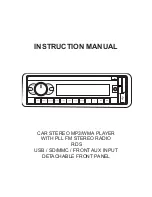
AEQ
PHOENIX STRATOS
116
•
Once the circuit has been established, the parties can communicate with each other at
the highest speed that the medium allows, without having to share the bandwidth nor
the use time.
•
The circuit is fixed. Because a physical circuit is specifically dedicated to the
communication session in question, once the circuit is established there are no losses
of time for calculation and decision-making regarding routing through the intermediate
nodes. Each intermediate node has a single route for the incoming and outgoing
packets that belong to a specific session, which means it is impossible for the packets
to be disordered.
•
Simplicity in the management of intermediate nodes. Once the physical circuit has been
established, no further decisions need to be made to route the data from origin to
destination.
C1.1.2. Disadvantages:
•
Delay in initiating communication. A time interval is required to make the connection,
which entails a delay in the transmission of the information.
•
Blockage of resources. No use is made of the circuit during the moments when there is
no transmission between the parties. Bandwidth is wasted while the parties are not
communicating with each other.
•
The circuit is fixed. The communication route is not readjusted; it is not adapted at each
opportunity to the least costly path between the nodes. Once the circuit has been
established, no use is made of the alternative, less expensive pathways that may
become available during the session.
•
Poor fault tolerance. If an intermediate node fails, the entire circuit crashes. The
connections then have to be re-established from zero.
C1.2. Packet switching.
The sender divides the message to be sent into an arbitrary number of packets of the same
size, to which a header and the originating and destination addresses are added, as well as
control data that will then be transmitted through different communication media between
temporary nodes until they reach their destination. This switching method is the one that is used
in today's IP networks. It has emerged to optimize transmission capacity through existing lines.
The temporary nodes store the packets in queues in their memories, which need not be very
large.
C1.2.1. Switching Modes:
•
Virtual circuit: Each packet is routed through the same virtual circuit as the preceding
ones. Therefore the order of arrival of the packets to their destination is controlled and
ensured.
•
Datagram: Each packet is routed independently from the rest. Thus the network cannot
control the path followed by the packets, nor ensure the order in which they reach their
destination.
C1.2.2. Advantages:
•
In case of error in a packet, only that packet will be resent, without affecting other
packets that arrived without errors.
•
Interactive communication. Limiting the maximum packet size ensures that no user can
monopolize a transmission line for very long (microseconds), which means that packet
switching networks can handle interactive traffic.
•
Packet switching increases network flexibility and profitability.
•
The pathway a communication takes can be altered from one moment to the next (for
example, in case one or more of the routers breaks down).
•
Theoretically, priorities can be assigned to the packets in a given communication. Thus,
a node can select, from its queue of packets waiting to be transmitted, the ones that
have higher priority.












































